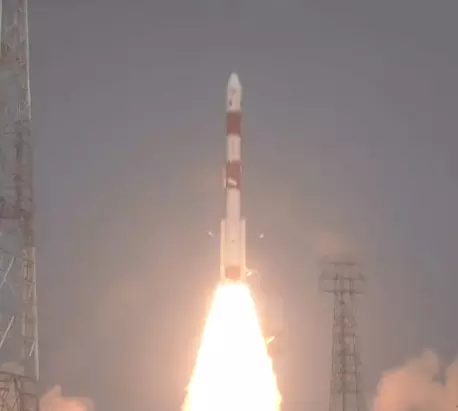TRENDING TAGS :
ISRO’s XPOSAT soars into the skies on New Year; launch successful
This was the 60th launch of the Polar Satellite Launch Vehicle (PSLV), known as ISRO’s warhorse. With the successful launch of the mission, India has become only the second country in the globe after the US to launch an advanced astronomy observatory to study black holes and neutron stars.
Indian Space Research Organisation (ISRO) on Monday began the New Year on a positive note with the successful launch of PSLV-C58 carrying XPOSAT, the country’s first dedicated satellite to study black holes, and nine other payloads from start-ups, from the Satish Dhawan Space Centre in Sriharikota near here.
This was the 60th launch of the Polar Satellite Launch Vehicle (PSLV), known as ISRO’s warhorse. With the successful launch of the mission, India has become only the second country in the globe after the US to launch an advanced astronomy observatory to study black holes and neutron stars.
The satellite weighing 469 kg with two payloads -- POLIX (Polarimeter Instrument in X-rays) and XSPECT (X-ray Spectroscopy and Timing) – took off from the first launch of the SDSC, Sriharikota at 9.10 am.
After about 21 minutes, the satellite was put into its required orbit, making the mission successful. Now the PS4 stage will burn twice to change its orbit using the PSLV Orbiter Experimental Module (POEM) at an altitude of 350 km to launch nine additional payloads, including all-women satellite designed and developed by LBS Institute of Technology for Women in Kerala’s Thiruvananthapuram.
“On January 1, 2024, yet another successful mission of PSLV has been accomplished. PSLV-C58 has placed the primary satellite - XPoSat - in the intended orbit of 650 km with 6-degree inclination," ISRO Chairman S Somanath announced.
The successful launch comes after a fruitful 2023 for the ISRO during which it launched Chandrayaan-3, the country’s third unmanned lunar mission, and Aditya-L1, a solar mission. India became the first country to land in the south polar region of the moon.
Somanath said 2024 is going to be the year of Gaganyaan, India’s space manned mission to the space, with two more test missions and several experiments being planned in the New Year. “There will also be launches of PSLV, GSLV, and SSLV,” Somanath added.
Dr V Narayanan, Director, Liquid Propulsion Systems Centre (LPSC), termed the successful launch of the mission as a “New Year’s gift” to Indians living across the globe. “This is the 60th launch for PSLV and the performance of the vehicle was as expected and as predicted. It injected the satellite into the required object,” he added.
A Rajarajan, Director, SDSC, said the mission is yet another example of ISRO’s service to humanity as the satellite will study the largely unexplored area of black holes.
XPoSat (X-ray Polarimeter Satellite) is the first dedicated scientific satellite from ISRO to carry out research in space-based polarisation measurements of X-ray emission from celestial sources. While the satellite configuration is modified from IMS-2 bus platform, the Configuration of the mainframe systems are derived based on the heritage of IRS satellites.
While POLIX will measure polarisation of X-rays in the energy band 8-30keV emanating from about 50 potential cosmic sources through Thomson Scattering, XSPECT will carry out long term spectral and temporal studies of cosmic X-ray sources in the energy band 0.8-15keV.
Besides, the mission launched ten additional payloads with one designed to compare solar irradiance and UV Index by students from the LBS Institute of Technology for Women in Kerala’s Thiruvananthapuram. Seven of the ten payloads are from private sector or educational institutions, while three were made by ISRO institutions.
The mission will also study the distribution of magnetic field, geometric anisotropies, alignment with respect to the line of sight, nature of accelerators in galactic cosmic X-Ray sources by measuring degree of polarization and its angle. It will also study and confirm that the production of X-Rays is either from the polar cap of the neutron star or outer cap of the pulsar magnetosphere.



